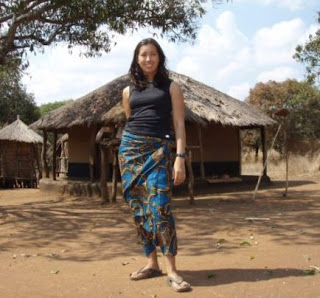The training program was composed of a combination of in class presentations, field visits, and practical exercises, and served to introduce TLC’s programs, project objectives, and criteria for site selection, and increase the knowledge and skill of staff for better management of improved agricultural practices and management of the natural resource base. It was very helpful for me!
Malawi is a country which is highly dependent on agriculture. The majority of the population is involved in farming, but in recent years, crop yields have been declining. Sixty percent of smallholder farmers live under the poverty line. Soil fertility has been diminishing and losses of top soil are very high. Deforestation is a very serious problem, with 54% of forest cover being lost between 1972-1995. To address these problems, two of TLC’s main focus areas, and the focus of our training this past week, are best bet practices for small scale irrigation and sustainable agriculture through the use of agroforestry principles.
IRRIGATION
TLC promotes the use of 3 different irrigation practices: treadle pump, stream diversion, and drip irrigation. We focussed on the first two options due to cost restrictions associated the third.
Treadle pumps are used to draw water from a shallow well or river to a high point on the field where it is then directed by gravity through a series of channels to planting basins. The pump itself is operated by a single person, while a second one directs the water in the field.

Photo 1: Farmer using treadle pump

Photo 2: Flooding the field

Photo 3: A treadle pump irrigation field
Stream diversion involves diverting water from a stream by gravity using a hand dug canal to direct water to the fields. This technique can only be used in hilly areas, as it requires a change in elevation to convey the water.

Photo 4: stream diversion irrigation system
AGROFORESTRY
Nurseries are set up in villages to produce seedlings for use in a variety of agroforestry techniques. The nurseries provide the seedlings protection from pests and animals, rain and sun, and temperature extremes until they are ready for planting.

Photo 5: Tree nursery
Agroforestry involves the planting of trees within an agricultural setting; a variety of tree planting techniques are promoted, some focused on improving soil fertility, others focused on the production of wood and other products. TLC promotes both the planting of tree seedlings and the improved use and management of natural forests and trees. Tree planting occurs around the homestead, along property and field boundaries, and in woodlots/orchards. The improved management of natural trees promotes natural regeneration of trees, retention of natural trees on farmland, and the management of natural woodlands.

Photo 6: Planting of trees on field boundaries

Photo 7: Agroforestry practices result in women spending less time collecting firewood, giving them more time to complete other tasks

Photo 8: Alley cropping of trees within a field
During the field visits, I had my first experiences visiting rural Malawian villages. The people we met were very welcoming, and very proud of their work. We had the opportunity to speak to many of the farmers about their experiences, and they were happy to oblige.

Photo 9: A farmer (on the left) telling us about his farming practices while Glynwel (on the right), a project coordinator, translates.

Photo 10: A group of children and women who sang and danced while we visited

Photo 11: A pair of farmers and me

Photo 12: Group shot!
I’m going to be heading out to stay in a village for a little while starting on Monday. I will have limited internet access until I return to the city. When I return to Lilongwe I will find a place to live, and finally settle in to life here, something I am very much looking forward to.
Until then!


3 comments:
a) what's the name of the village?
b) will you need an interpreter to understand the family you're staying with?
c) i like your skirt in that picture.
Hey Laura!
a) Not sure about the village name, but the area is called Imvara
b) I won't have an interpreter, so hopefully someone there will speak English! I'm also going to be taking this time as an opportunity to really start learning Chichewa, as I'm going to be forced to use it!
c) My skirt is actually a "chitenje" which is basically a 2m long piece of cloth used as a wrap skirt, traditionally worn by women in the villages (and to a lesser extent in town). I just got a skirt made out of similar fabric by a tailor the other day, which I'm very happy about!
beautiful photos kim! you have great posts so far - keep it up! :)
love erin
Post a Comment